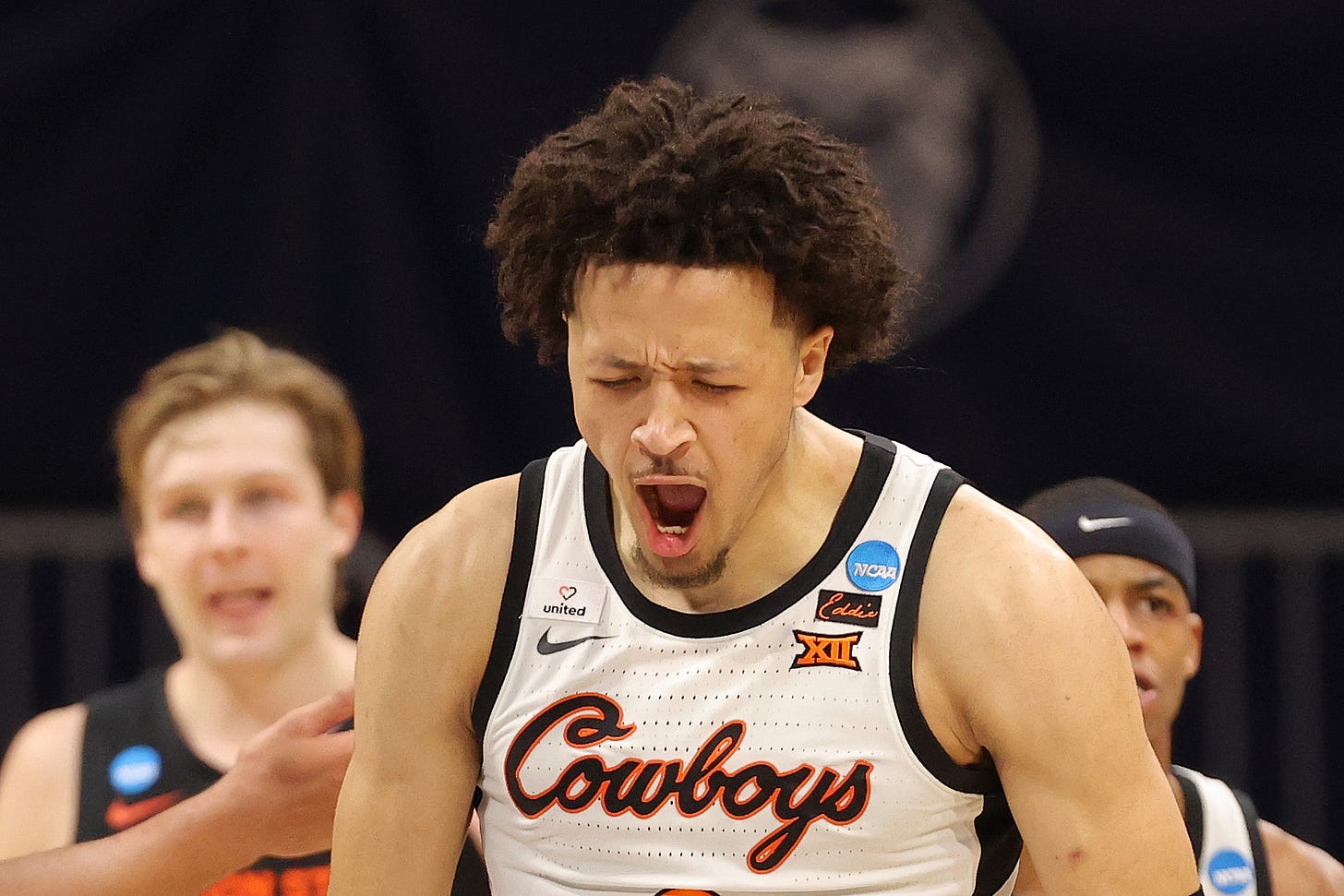Draft Tiers: Rating the Top 46 Prospects
Here's my annual draft tiers report on how NBA talent evaluators rate 46 of this year's draft prospects, from potential superstars down to role players
(Note to readers: This is an excerpt of Draft Tiers provided to free subscribers. To get the Draft Tiers 2-6 … you need to be a paid subscriber. Click button below to read the full version.)
You’ve gotten a steady diet of six Big Boards and three Mock Drafts on this site, with one more Big Board and two more Mocks to go.
There’s one other way I like to rank the draft, as do many NBA teams. Starting 12 years ago, I began chronicling the draft tier system, based on my conversations with NBA front offices.
How the tier system works
In the tier system, teams rate NBA prospects -- Tier 1, Tier 2, etc. -- and group those players into tiers. Then, within each tier, the teams rank the players based on team need. This system allows teams to stick to the principle of drafting the best player available while also considering a player’s fit.
Using this system, a team will take a Tier 2 player who isn’t a great fit ahead of a Tier 3 player who is a better fit.
Defining the tiers
Tier 1 players are potential NBA superstars: prospects with the potential to be franchise players and make multiple All-NBA teams in their career. While this year has three Tier 1 prospects, some years have none.
Tier 2 players are potential NBA All-Stars. A prospect in Tier 2 can become the best player on his team and make at least one All-Star Game.
Tier 3 players project as high-level NBA starters: players with the potential to be a starter for years on playoff-caliber teams.
Tier 4 players are potential NBA starters and rotation players. They may start at some point in their careers, but their most likely role is as an impact player coming off the bench.
Tier 5 players are deep rotation players: typically players 8-10 on a roster.
Tier 6 players are bench players, often 12th-man types who might also put in time in the G League.
This year’s draft tiers
The tier system is one of the best ways to measure the strength of a draft. This year we have three Tier 1 players, three Tier 2 players and six Tier 3 players. That’s a very strong draft at the top.
Typically in a draft there are one or two Tier 1 prospects (in 2013 and 2020 there were zero), then one to three Tier 2 prospects and three to five Tier 3 prospects. So we are at the top end of (or above) what to expect in each of the top three tiers.
To get these assessments, I talked to NBA talent evaluators who employ this system. What follows is a consensus view at how their tiers look this year.
For a prospect to make a particular tier, at least 50% of NBA talent evaluators had to rate him as belonging in that tier. If a player is in a tier, it’s because my sources voted to put him there.
You can also listen to my Draft Tiers podcast to hear how Tony Jones of The Athletic rates the prospects as compared to the tier ratings I’ve compiled from teams.
The prospects below are listed alphabetically within each tier. As noted, individual teams typically list the prospects by fit within each tier.
TIER 1: POTENTIAL SUPERSTARS
Cade Cunningham, Oklahoma State
Jalen Green, G League Ignite
Evan Mobley, USC
This year is the first time we’ve had three Tier 1 prospects since the 2014 NBA Draft.
This is a tough category to crack. Since I started doing my Draft Tiers column in 2009, only 10 players have made Tier 1: Blake Griffin, John Wall, Anthony Davis, Andrew Wiggins, Joel Embiid, Jabari Parker, Karl-Anthony Towns, Ben Simmons, Markelle Fultz and Lonzo Ball. (I didn’t do a Draft Tiers column in 2018 or 2019.)
Six of the 10 have lived up to the rating: Griffin, Wall, Davis, Embiid, Simmons and Towns. Only Towns has made fewer than three All-Star Games, and he is a two-time All-Star at age 25. Parker’s and Fultz’s careers have been derailed by injuries. Wiggins appears to have topped out as more of a Tier 3 or Tier 4 player, and Ball is still 23 and improving.
Back to 2021: There is almost universal support for Cunningham as the No. 1 pick and, what’s more, as a Tier 1 prospect.
Mobley had nearly unanimous backing for Tier 1 as well, with just two people calling him a Tier 2 prospect. The Green vote was significantly more split between Tier 1 and Tier 2, but he had just enough Tier 1 support to edge into this category.
TIER 2: POTENTIAL ALL-STARS
???
TIER 3: HIGH-LEVEL STARTERS
???
TIER 4: POTENTIAL STARTERS/ROTATION PLAYERS
???
TIER 5: DEEP ROTATION PLAYERS
???
TIER 6: SO YOU’RE TELLING ME THERE’S A CHANCE
???
(Note to readers: This is an excerpt of Draft Tiers provided to free subscribers. To get the Draft Tiers 2-6 … you need to be a paid subscriber. Click button below to read the full version.)
Paid subscribers will also get access to full Mock Drafts, Big Boards, scouting reports on all of the top players in the draft as well as the ability to comment on articles and special discussion boards, Zoom calls and more interaction with me in the coming weeks.)



